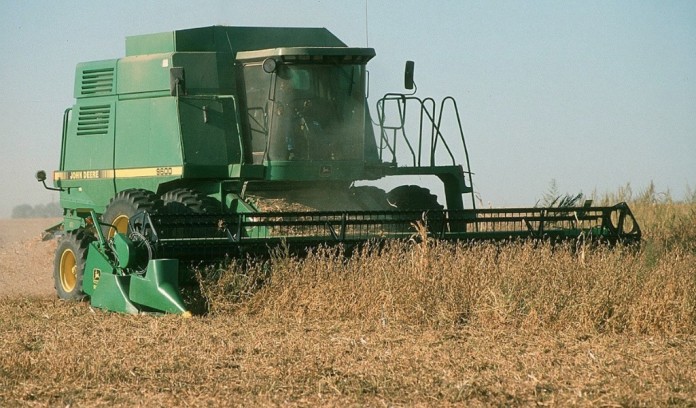COLUMBUS — Ohio soybeans planted from May 1 through mid-May resulted in better yields, according to a study by researchers from Ohio State University Extension and the Ohio Agricultural Research and Development Center.
Soybean yields
In the study of 2013 and 2014 planting trials at OARDC’s Western Agricultural Research Station near South Charleston, Ohio, soybean yields decreased by 0.6 bushels per acre per day when planted after mid-May, according to Laura Lindsey, a soybean and small grains specialist with OSU Extension.
Soil tempertures
Those yield results held true if the soil temperatures were 50 degrees or warmer.
However, soybeans planted too early when soil conditions were not adequate resulted in bean leaf beetle defoliation and frost damage.
Planting conditions
In a recent posting in the college’s Crop Observation and Recommendation Network (C.O.R.N) newsletter, Lindsey said soybean growers need to consider planting conditions before heading to the field.
“Soybean germination begins when soil temperatures reach 50 degrees and moisture is present at the planting depth of 1-1.5 inches,” she said. “With these conditions, emergence can typically be expected 2-3 weeks after planting.”
Lindsey cautions growers not to plant early if the soil is excessively cold or wet.
“Slower germination and compaction can negate the benefits of the earlier planting date,” she said.
Row spacing
Seeding rates and row spacing are also important to consider to achieve optimum soybean yields, Lindsey said.
Preliminary results of another two-year study of soybean seeding rates and row spacing show fields with between 100,000-140,000 plants per acre at harvest will result in yields that generally provide the maximum economic return, she said.
“The study also found that soybeans planted at 7.5- and 15-inch row widths outyielded soybeans planted at 30-inch row widths,” Lindsey said.
“Soybeans planted in the 30-inch rows yielded on average 15 to 20 percent lower than those planted in the narrower rows.”
The study, which is funded by the Ohio Soybean Council, will also use data from this year’s growing season to compare to last year’s results.










